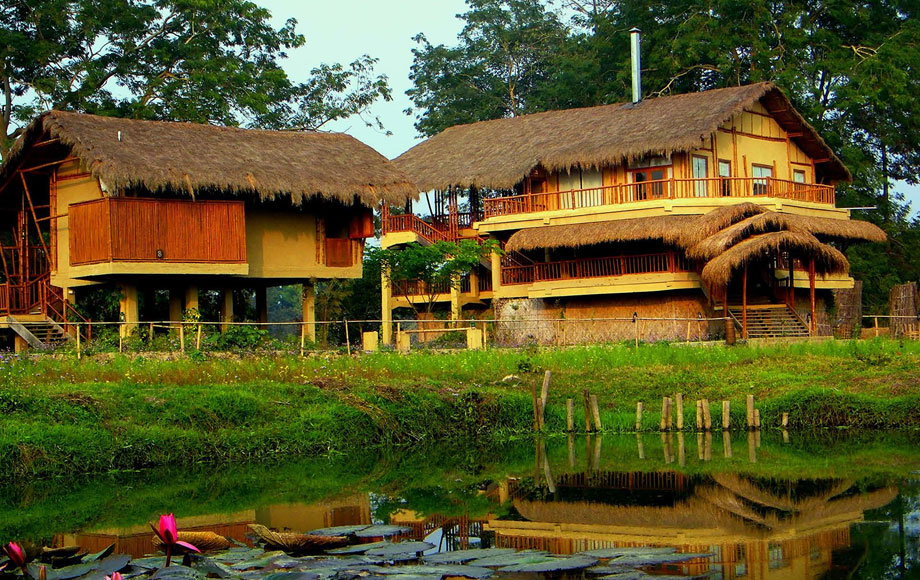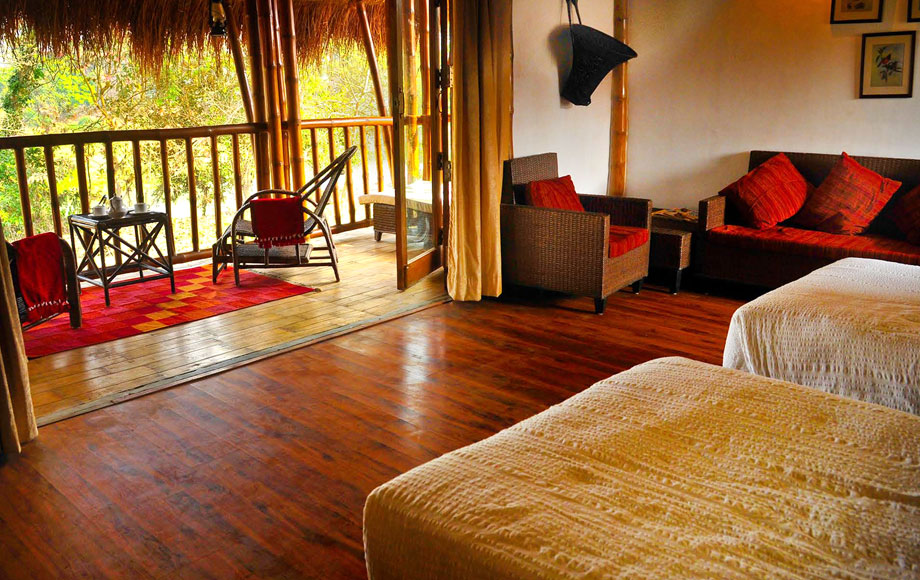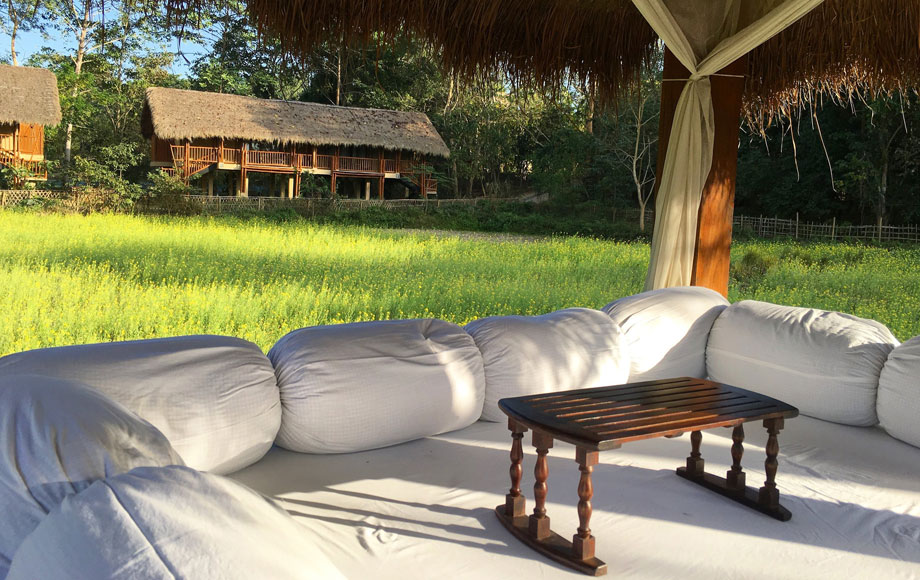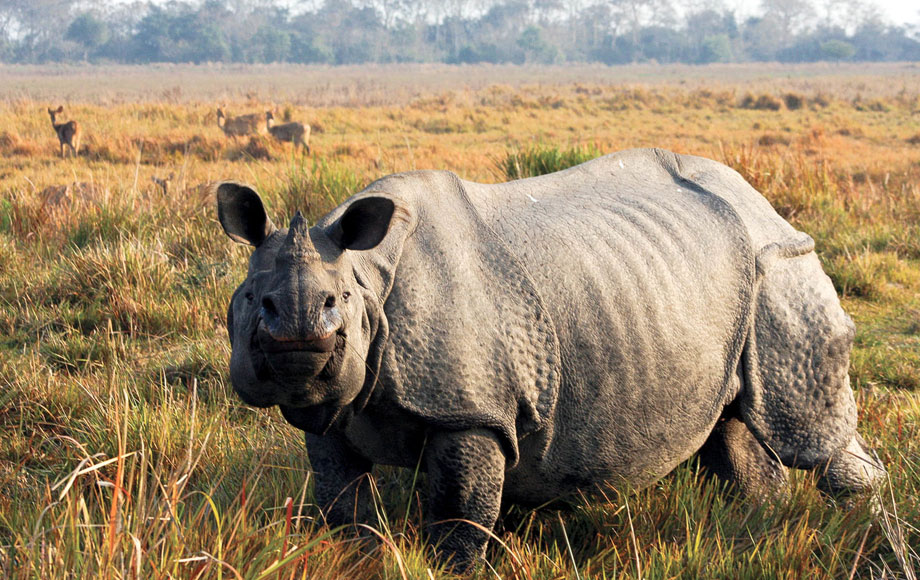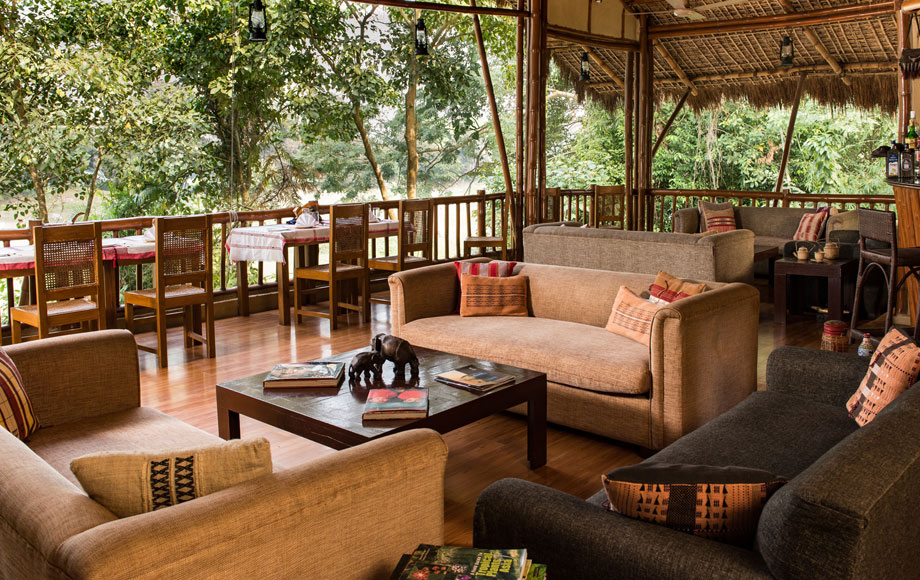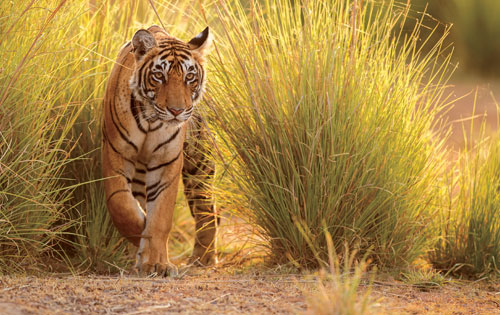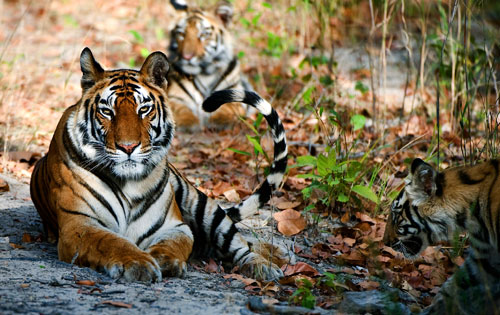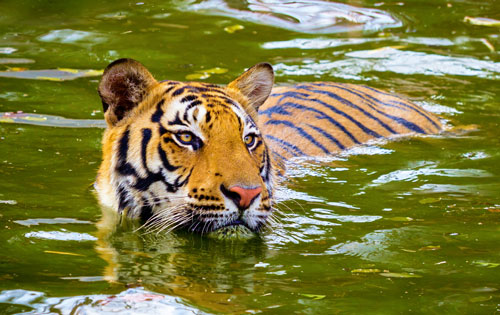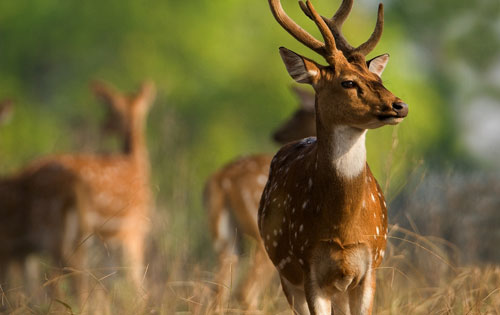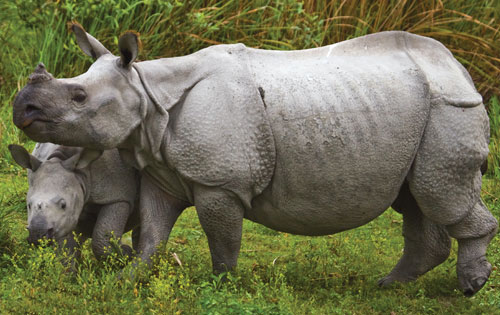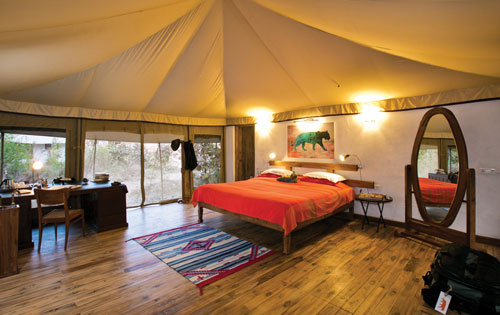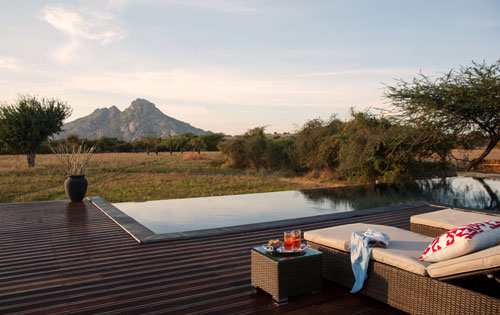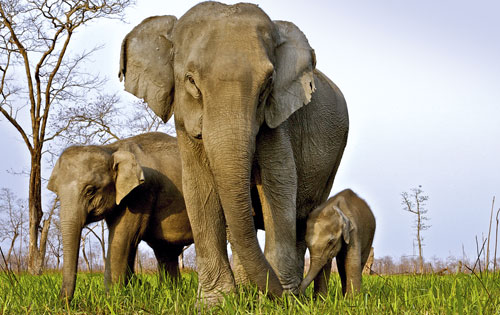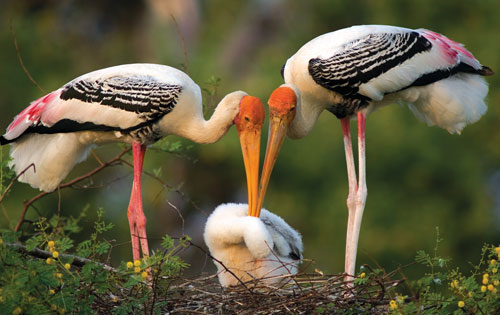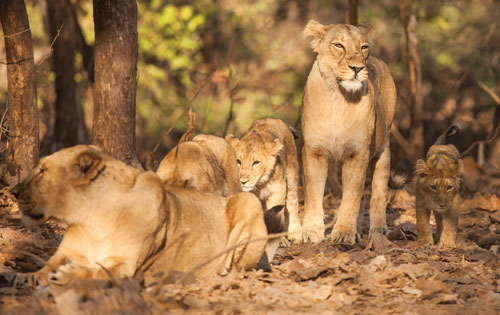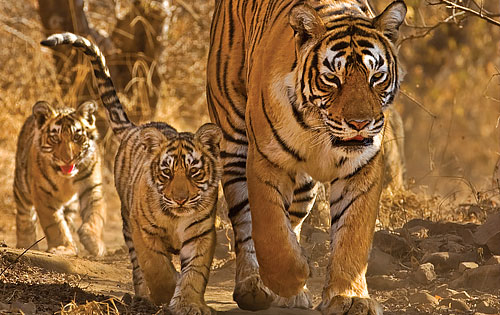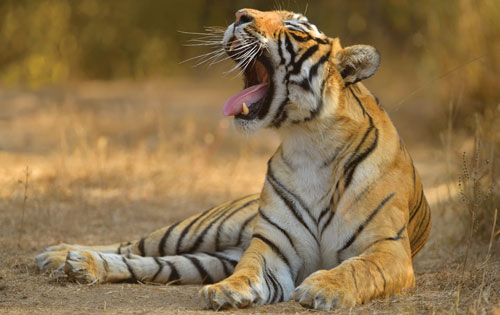Diphlu River Lodge
Separated from the UNESCO World Heritage-listed Kaziranga National Park by its namesake waterway, Diphlu River Lodge is built with organic materials such as bamboo and thatch, with great care taken to ensure the property is eco-friendly and gives back to the communities in its vicinity. Guests at this intimate lodge are accommodated in 12 rustic yet completely comfortable cottages, with air-conditioning, spacious sitting areas and folding glass doors leading out onto a furnished veranda.
At the heart of Diphlu River Lodge is a cool central “machan” or raised platform, where guests can enjoy a refreshing drink or delicious meal while watching buffaloes bathe in the water below. There is also a TV and small library in this airy space, which is connected to guest cottages by grassy paths and elevated walkways. Should you wish to dine outdoors, there are a number of dedicated spaces including a romantic tea deck and a picturesque hilltop clearing where barbecues and Assamese dance performances are often held.
Things to do include morning and late afternoon open Jeep safaris accompanied by resident naturalists into Kaziranga, in search of the park’s famed one-horned rhinoceros, swamp deer, Bengal tiger and 400 species of bird. Other options include Brahmaputra cruises, river dolphin boat safaris and tribal village visits.
Location
How to get to Diphlu River Lodge
There are regular scheduled flights from major Indian cities such as Delhi and Mumbai into Guwahati airport. The terminal is approximately 4 hours from Diphlu River Lodge. It is also possible to reach the property by Brahmaputra cruise boat.
Activities at Diphlu River Lodge
- Guided open vehicle safaris in Kaziranga National Park
- Bird-watching
- Brahmaputra River Cruises
- Dolphin boat safaris
- Tribal village visits
*Some activities are available at extra cost.
Diphlu River Lodge Highlights
- An outstanding eco-lodge at the edge of Kaziranga National Park
- The perfect base for safaris in search of one-horned rhino and Bengal tiger
- Amazing bird-watching with 400 recorded avifauna species
- Water-based activities including dolphin cruises and boating on the Brahmaputra River
- Visit local tribal villages and enjoy traditional musical performances
Featured
Accommodation
Below are a selection of our preferred lodges in some of India’s premier wildlife reserves. Please contact us to tailor accommodation options to suit the style of your trip and your budget.
India Wildlife Safaris and Tours Overview
Why India Wildlife Reserves Safaris & Tours: India’s wildlife reserves are a haven for many remarkable and endangered creatures like tiger, rhino, leopard and sloth bear. A wildlife safari combines beautifully with India’s cultural highlights.
When to Go:
Bandhavgarh National Park: Feb – May is the best time for gameviewing; the park is closed from early Jul to end Oct.
Corbett National Park: The best time for tiger viewing is the dry months of Apr – mid Jun, when wildlife come out in search of water. The best birdwatching is between Dec – Feb.
Ranthambhore National Park: The best time to go is in winter (Dec – Feb) and Mar/Apr. The park is closed during the monsoon; it reopens on 1 Oct.
Kanha National Park: Best time to visit is Mar – Jun. Park closed during monsoon from beginning Jul – Oct. Also closed midday to give respite to wildlife.
Kaziranga National Park: Best visited from mid-November to early April. The low-lying grasslands are flooded during the monsoon. During the floods, the animals migrate to higher, drier ground.
Periyar and Nagarhole National Parks: The best time to go is in the cool dry months (Oct- Feb) and during the hotter months of Mar/Apr for elephant viewing. The park is open during the monsoon period (June – Sep); but it is not the best season for spotting game.
Combine With: Safaris to India’s wildlife reserves are usually part of a general sightseeing itinerary which include India’s many cultural and historic attractions. They can also be combined with the wildlife parks of neighouring Nepal, Bhutan or Sri Lanka.
Getting There: The national parks of northern India can be accessed from major cities such as Delhi, Jaipur and Guwahati (Kaziranga). In South India, Periyar and Nagarhole/Kabini can be reached from Kochi, usually as part of an overland itinerary.
